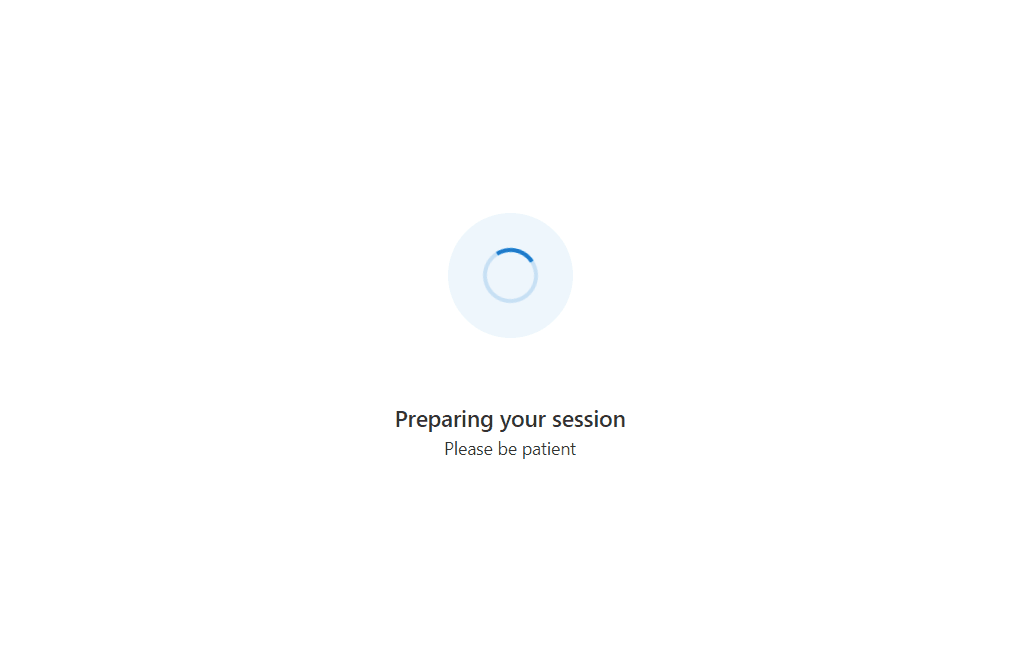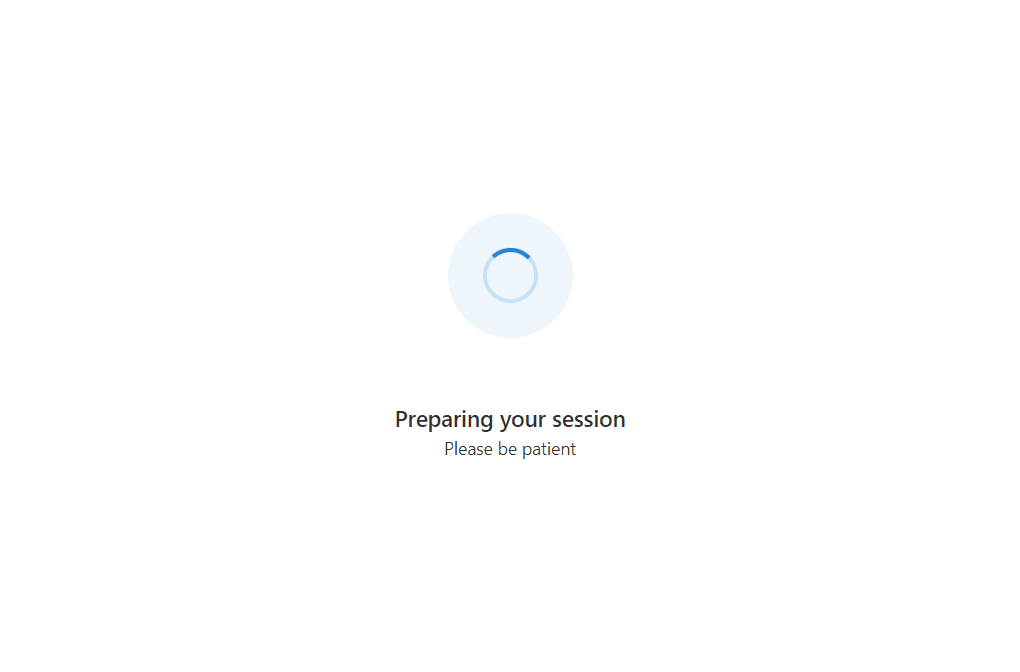Vytvoření prostředí pro připravenost volání pomocí Azure Communication Services
Důležité
Tato funkce Azure Communication Services je aktuálně ve verzi Preview.
Rozhraní API a sady SDK verze Preview se poskytují bez smlouvy o úrovni služeb. Doporučujeme je nepoužívat pro produkční úlohy. Některé funkce nemusí být podporované nebo můžou mít omezené možnosti.
Další informace najdete v dodatečných podmínkách použití pro Verze Preview Microsoft Azure.
V tomto kurzu používáme Azure Communication Services s knihovnou uživatelského rozhraní k vytvoření prostředí, které uživatele připraví na připojení k hovoru. Knihovna uživatelského rozhraní poskytuje sadu bohatých komponent a ovládacích prvků uživatelského rozhraní, které lze použít k vytvoření prostředí připravenosti na volání, a bohatou sadu rozhraní API pro pochopení stavu uživatele.
Požadavky
- Postupujte podle postupu nastavení aplikace v předchozí části tohoto kurzu: Připravenost na volání – přehled
Stažení kódu
Získejte přístup k úplnému kódu tohoto kurzu na GitHubu.
Kontrola podpory prohlížeče
Abychom zajistili, že uživatel bude mít co nejlepší prostředí, chceme nejprve zkontrolovat, jestli je uživatel v podporovaném prohlížeči. V této části vytvoříme stránku, na které se zobrazí "Příprava relace", zatímco provedeme rychlou kontrolu podpory na pozadí v prohlížeči uživatele.

Stránka Příprava relace
Vytvořte nový soubor s názvem PreparingYourSession.tsx , ve kterém vytvoříme číselník, který se zobrazí uživateli při provádění asynchronních kontrol na pozadí:
src/PreparingYourSession.tsx
import { useTheme } from '@azure/communication-react';
import { ISpinnerStyles, IStackStyles, ITextStyles, ITheme, Spinner, Stack, Text } from '@fluentui/react';
/** This page displays a spinner to the user. This is used to show the user that background checks are being performed. */
export const PreparingYourSession = (): JSX.Element => {
const theme = useTheme();
return (
<Stack verticalFill verticalAlign="center" horizontalAlign="center" tokens={{ childrenGap: '3rem' }}>
<Stack styles={spinnerContainerStyles(theme)}>
<Spinner styles={spinnerStyles} />
</Stack>
<Stack horizontalAlign="center">
<Text styles={headingStyles} variant="large">Preparing your session</Text>
<Text variant="medium">Please be patient</Text>
</Stack>
</Stack>
);
};
const headingStyles: ITextStyles = {
root: {
fontWeight: '600',
lineHeight: '2rem'
}
};
const spinnerStyles: ISpinnerStyles = {
circle: {
height: '2.75rem',
width: '2.75rem',
borderWidth: '0.2rem'
}
};
const spinnerContainerStyles = (theme: ITheme): IStackStyles => ({
root: {
padding: '1.75rem',
borderRadius: '50%',
background: theme.palette?.themeLighterAlt
}
});
Tuto obrazovku Příprava relace pak můžeme připojit k naší aplikaci.
App.tsx V proměnné testState a pro sledování stavu aplikace a v době, kdy testState je ve runningEnvironmentChecks stavu, zobrazíme obrazovku Příprava relace.
Nejprve do souboru App.tsx , který jsme vytvořili v přehledu, přidejte následující importy:
import { useState } from 'react';
import { PreparingYourSession } from './PreparingYourSession';
Po dokončení aktualizujte soubor App.tsx tak, aby obsahoval nový spinner.
type TestingState = 'runningEnvironmentChecks' | 'finished';
const App = (): JSX.Element => {
const [testState, setTestState] = useState<TestingState>('runningEnvironmentChecks');
return (
<FluentThemeProvider>
<CallClientProvider callClient={callClient}>
{/* Show a Preparing your session screen while running the call readiness checks */}
{testState === 'runningEnvironmentChecks' && (
<>
<PreparingYourSession />
</>
)}
{/* After the device setup is complete, take the user to the call. For this sample we show a test complete page. */}
{testState === 'finished' && <TestComplete />}
</CallClientProvider>
</FluentThemeProvider>
);
}
Provedení kontroly informací o prostředí
Nejprve vytvořte volání environmentSupportUtils.tssouboru nástroje . Do tohoto volání přidáme metodu checkEnvironmentSupport. Tato metoda používá volání stavového klienta k provedení požadavku na informace o prostředí, na kterém je spuštěný volající stavový klient.
src/environmentSupportUtils.ts
import { Features, EnvironmentInfo } from "@azure/communication-calling";
import { StatefulCallClient } from "@azure/communication-react";
/** Use the CallClient's getEnvironmentInfo() method to check if the browser is supported. */
export const checkEnvironmentSupport = async (callClient: StatefulCallClient): Promise<EnvironmentInfo> => {
const environmentInfo = await callClient.feature(Features.DebugInfo).getEnvironmentInfo();
console.info(environmentInfo); // view console logs in the browser to see what environment info is returned
return environmentInfo;
}
Data vrácená z checkEnvironmentSupport obsahují následující informace:
- Podpora prohlížečů
- Podpora verzí prohlížeče
- Podpora operačního systému (platforma)
- Podrobné informace o prostředí
Informování uživatele, že se nachází v nepodporovaném prohlížeči
Dále musíme tyto informace poskytnuté z volající sady SDK použít k informování uživatele o stavu jeho prostředí, pokud dojde k problému. Knihovna uživatelského rozhraní poskytuje tři různé komponenty, které slouží k tomuto účelu v závislosti na tom, o jaký problém se jedná.
UnsupportedOperatingSystemUnsupportedBrowserUnsupportedBrowserVersion
Začneme hostováním komponent knihovny uživatelského rozhraní v modálu FluentUI: Vytvoříme nový soubor s názvem , UnsupportedEnvironmentPrompts.tsx ve kterém vytvoříme různé výzvy:
src/UnsupportedEnvironmentPrompts.tsx
import { UnsupportedOperatingSystem, UnsupportedBrowser, UnsupportedBrowserVersion } from '@azure/communication-react';
import { Modal } from '@fluentui/react';
/**
* Modal dialog that shows a Browser Version Unsupported Prompt
* Use the `onTroubleShootingClick` argument to redirect the user to further troubleshooting.
* Use the `onContinueAnywayClick` argument to allow the user to continue to the next step even though they are on an unsupported browser version.
*/
export const BrowserVersionUnsupportedPrompt = (props: { isOpen: boolean, onContinueAnyway:() => void }): JSX. Element => (
<Modal isOpen={props.isOpen}>
<UnsupportedBrowserVersion
onTroubleshootingClick={() => alert('This callback should be used to take the user to further troubleshooting')}
onContinueAnywayClick={() => props.onContinueAnyway()}
/>
</Modal>
);
/**
* Modal dialog that shows a Browser Unsupported Prompt
* Use the `onTroubleShootingClick` argument to redirect the user to further troubleshooting.
*/
export const BrowserUnsupportedPrompt = (props: { isOpen: boolean }): JSX.Element => (
<Modal isOpen={props.isOpen}>
<UnsupportedBrowser
onTroubleshootingClick={() => alert('This callback should be used to take the user to further troubleshooting')}
/>
</Modal>
);
/**
* Modal dialog that shows an Operating System Unsupported Prompt
* Use the `onTroubleShootingClick` argument to redirect the user to further troubleshooting.
*/
export const OperatingSystemUnsupportedPrompt = (props: { isOpen: boolean }): JSX.Element => (
<Modal isOpen={props.isOpen}>
<UnsupportedOperatingSystem
onTroubleshootingClick={() => alert('This callback should be used to take the user to further troubleshooting')}
/>
</Modal>
);
Tyto výzvy pak můžeme zobrazit v komponentě kontroly prostředí.
Vytvořte soubor s názvem EnvironmentChecksComponent.tsx , který obsahuje logiku pro zobrazení této výzvy: Tato komponenta má zpětné onTestsSuccessful volání, které může uživatele převést na další stránku aplikace.
src/EnvironmentChecksComponent.tsx
import { useEffect, useState } from 'react';
import { BrowserUnsupportedPrompt, BrowserVersionUnsupportedPrompt, OperatingSystemUnsupportedPrompt } from './UnsupportedEnvironmentPrompts';
import { useCallClient } from '@azure/communication-react';
import { checkEnvironmentSupport } from './environmentSupportUtils';
export type EnvironmentChecksState = 'runningEnvironmentChecks' |
'operatingSystemUnsupported' |
'browserUnsupported' |
'browserVersionUnsupported';
/**
* This component is a demo of how to use the StatefulCallClient with CallReadiness Components to get a user
* ready to join a call.
* This component checks the browser support.
*/
export const EnvironmentChecksComponent = (props: {
/**
* Callback triggered when the tests are complete and successful
*/
onTestsSuccessful: () => void
}): JSX.Element => {
const [currentCheckState, setCurrentCheckState] = useState<EnvironmentChecksState>('runningEnvironmentChecks');
// Run call readiness checks when component mounts
const callClient = useCallClient();
useEffect(() => {
const runEnvironmentChecks = async (): Promise<void> => {
// First we get the environment information from the calling SDK.
const environmentInfo = await checkEnvironmentSupport(callClient);
if (!environmentInfo.isSupportedPlatform) {
setCurrentCheckState('operatingSystemUnsupported');
// If the platform or operating system is not supported we stop here and display a modal to the user.
return;
} else if (!environmentInfo.isSupportedBrowser) {
setCurrentCheckState('browserUnsupported');
// If browser support fails, we stop here and display a modal to the user.
return;
} else if (!environmentInfo.isSupportedBrowserVersion) {
setCurrentCheckState('browserVersionUnsupported');
/**
* If the browser version is unsupported, we stop here and show a modal that can allow the user
* to continue into the call.
*/
return;
} else {
props.onTestsSuccessful();
}
};
runEnvironmentChecks();
// eslint-disable-next-line react-hooks/exhaustive-deps
}, []);
return (
<>
{/* We show this when the operating system is unsupported */}
<OperatingSystemUnsupportedPrompt isOpen={currentCheckState === 'operatingSystemUnsupported'} />
{/* We show this when the browser is unsupported */}
<BrowserUnsupportedPrompt isOpen={currentCheckState === 'browserUnsupported'} />
{/* We show this when the browser version is unsupported */}
<BrowserVersionUnsupportedPrompt isOpen={currentCheckState === 'browserVersionUnsupported'} onContinueAnyway={props.onTestsSuccessful} />
</>
);
}
Pak můžeme přidat do EnvironmentChecksComponentApp.tsx. Aplikace pak uživatele přesune do fáze Kontroly zařízení , jakmile bude test úspěšný pomocí zpětného onTestsSuccessful volání:
Teď naimportujeme novou komponentu do naší aplikace v App.tsx
import { EnvironmentChecksComponent } from './EnvironmentChecksComponent';
Pak pojďme aktualizovat komponentu App v App.tsx:
const App = (): JSX.Element => {
const [testState, setTestState] = useState<TestingState>('runningEnvironmentChecks');
return (
<FluentThemeProvider>
<CallClientProvider callClient={callClient}>
{/* Show a Preparing your session screen while running the call readiness checks */}
{testState === 'runningEnvironmentChecks' && (
<>
<PreparingYourSession />
<EnvironmentChecksComponent
onTestsSuccessful={() => setTestState('finished')}
/>
</>
)}
{/* After the device setup is complete, take the user to the call. For this sample we show a test complete page. */}
{testState === 'finished' && <TestComplete />}
</CallClientProvider>
</FluentThemeProvider>
);
}
Teď můžete aplikaci spustit. Zkuste spustit v nepodporovaném prohlížeči a zobrazí se nepodporovaná výzva prohlížeče:
